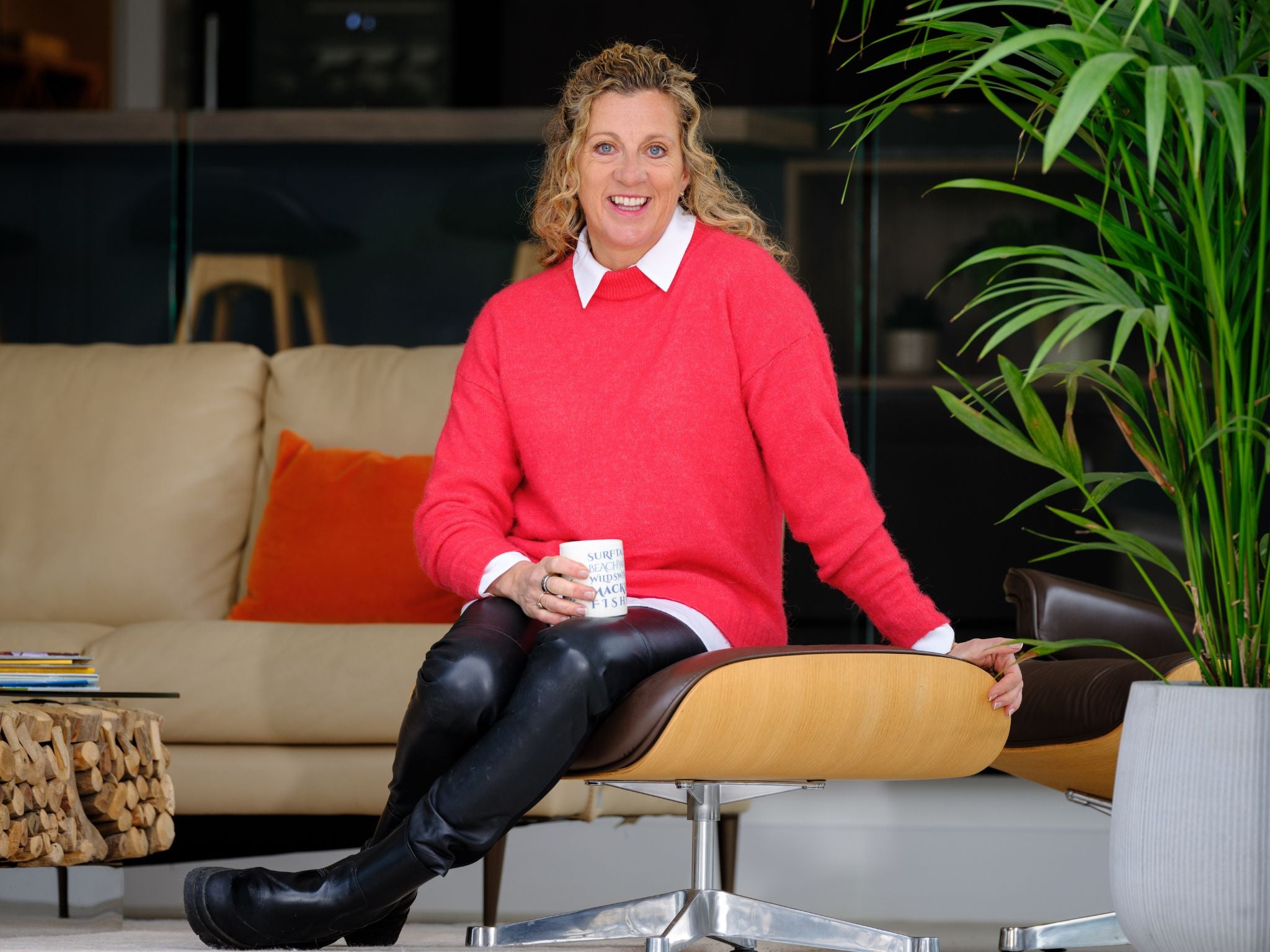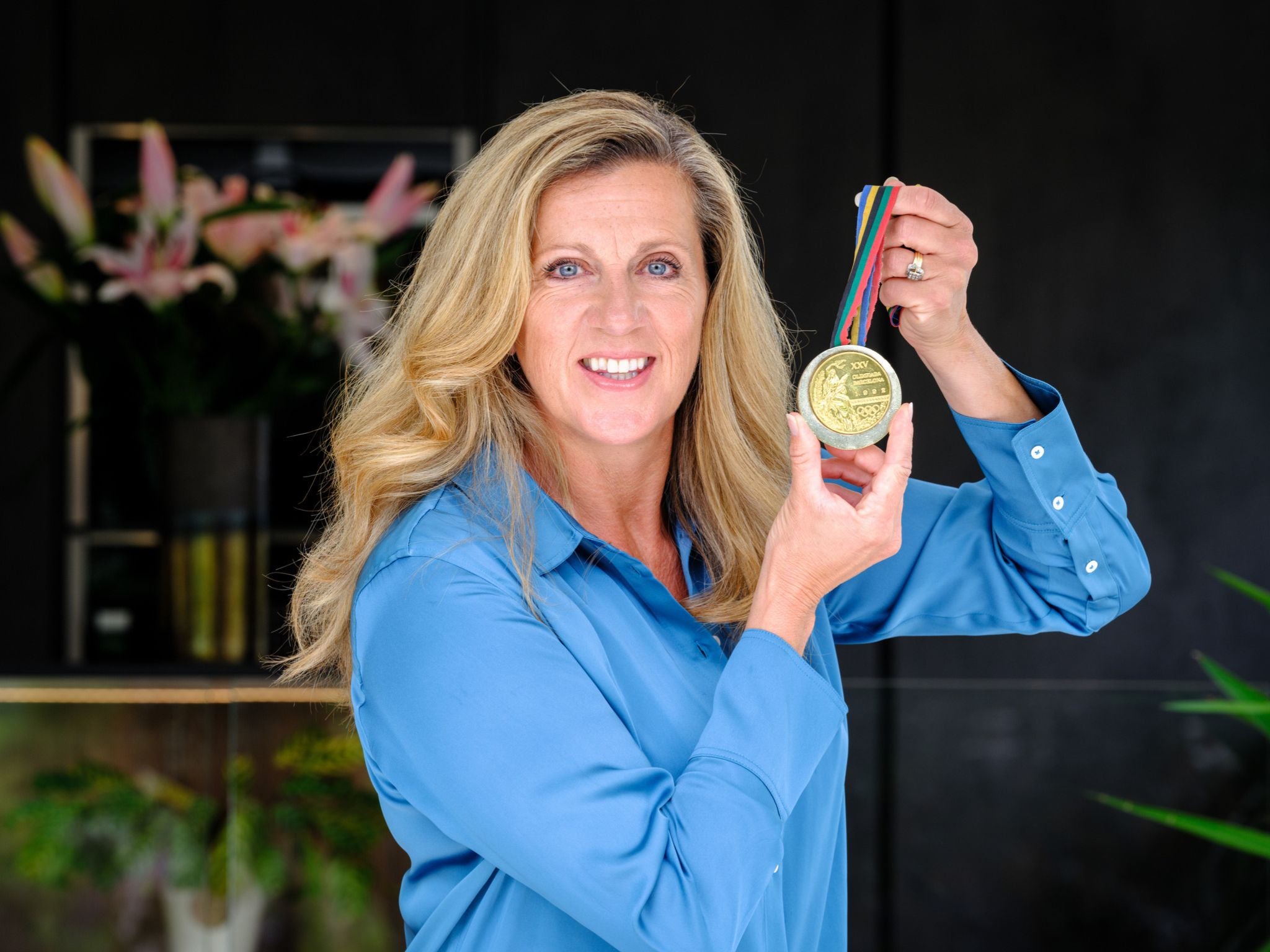This is how Sally Gunnell went from Olympic gold to training for ‘life performance’ and longevity
Olympic gold medallist Sally Gunnell used to train to see how far she could push her body. Now, she tells Harry Bullmore, she exercises for general fitness, functionality and longevity, and she wants to help others do the same.


Training to win Olympic gold and exercising for good health well into later life are two very different prospects. Today, I’m speaking to Sally Gunnell; one of the only people on the planet to have extensive experience of both.
The former world champion hurdler is five minutes early for our interview, showing signs that her Olympic discipline remains. But, she tells me, her current fitness regime is far less stringent than it was 30 years ago. Instead of chasing sweat and medals, her emphasis is now on something she calls “life performance”.
“I’m focussed on having enough energy, having enough focus, being happy in myself, being mobile, staying strong, being there for my family and preventing illnesses and injuries,” the 58-year-old says. “But I still want to go out and have a glass of wine, eat my easter eggs, go on holiday and enjoy myself.”
This approach has struck a chord with many. Gunnell’s recent Instagram videos regularly reach five- and six-figure audiences, containing everything from accessible mobility routines and mindset hacks to quick home workouts you can do while the kettle boils.
The mission, through this and her coaching company Life’s Hurdle, is to “help as many women as possible build confidence in life through mindset, exercise and nutrition”. To find out how, I quizzed Gunnell on how her training has shifted over the years, the best thing she believes you can do for your health, and the “all or nothing” mindset shift that has a transformative effect on her clients.
What does a typical week of training look like?
Gunnell’s exercise goals are refreshingly relatable, and strength training is the key to achieving them. This means two or three weekly sessions of lifting weights, with each one lasting anywhere from 20 to 40 minutes.
“Even though I had my muscles when I was competing, as you age they just go – it’s quite scary really, so weight sessions are an important part of my week” Gunnell tells me.
Age-related strength and muscle loss is called sarcopenia, and this can start as early as your 30s. Strength training, be that lifting weights or bodyweight exercises like press-ups and squats, is the best way to counter this.
“I like to do good compound lifts [those that recruit multiple muscles at once], so that might be the squat, bench press and Romanian deadlift,” Gunnell says. “I don’t focus on all arms or all legs in a workout either, I mix it up. It doesn’t need to be too complicated, I just make sure I [hit every major muscle group] in each training session .”
To provide a sufficient stimulus for building strength and muscle, exercises should feel challenging too. Gunnell likes to work to the rule of thumb that “the last two reps should be quite a strain”.
To complement her strength training efforts, she also goes on regular dog walks and does a dedicated stretching session once or twice per week.
“Mobility is something I’m very conscious of, probably because I pushed my body for quite a few years, so it’s really important for me to keep mobility in my legs and hips,” she explains.
Gunnell still goes for a run a couple of times per week too, although she says these outings look very different to her track sessions of old.
“I’ll go for a run, but it’s very slow and it’s much more about how I’m feeling,” she says. “I suppose the cardio side is built into me. I don’t need to go and run the marathon again, I just enjoy getting outside, getting into nature and having some really good thinking time. And I do think it’s the best thing for managing stress.”
The mindset change that makes the biggest difference
Gunnell says the fitness pitfall most people fall into is adopting an “all or nothing mindset”. They will set out with the best intentions, exercising regularly and adopting a healthier diet, then pack it all in as soon as they make any sort of slip-up – an act she likens to finding a flat tyre on your car then needlessly slashing the other three.
“If you miss a workout or overeat on one day, don’t say ‘I’m going to start again on Monday’, then throw the rest of the week away. Just go back to your normal [healthy] routine as soon as you can – progress isn’t about perfection,” she says.
“I like to think about it in terms of red, amber and green days. Your green days are your good days where you exercise and eat well, but sometimes you might have a red day where you don’t feel like doing anything. On those days, is there one thing you can do to make it an amber day?”
This could mean reaching for a nutritious snack rather than a chocolate bar, going for a short walk or doing a five-minute bodyweight workout. Making these small improvements on a regular basis is likely to have a compounding positive effect, and they can also keep you from falling off the fitness wagon.
“There are all sorts of different journeys people go on, but roughly it takes Life’s Hurdle members about three months to get to a good place where they’re not giving themselves a hard time and always trying to get that perfect day,” says Gunnell. “This mindset change is a slow thing we have to work on, but it’s the key to long-term health and building it into your life.”
Read more: How to spot the symptoms of burnout and treat them, according to wellbeing experts
The best thing you can do for your health
Linked to Gunnell’s traffic light philosophy; if you’re looking for a straightforward way to turn a red day into an amber one, her foundational advice couldn’t be more simple: “Get up and get walking.”
“Too many people sit behind a desk at work, then they sit in front of the telly when they come home,” she says. “So I would say the best thing you can do is get up, get mobile, get outside and just get walking. Stretch that over the day and break your day up instead of just sitting there for eight-plus hours. I think doing that can make a big difference to a lot of people.”
Walking can also be your workout for the day, particularly if you’re struggling for time, she adds.
“Sometimes, when I do cardio, I only have 20 minutes so I’ll go and find a hill then walk up and down it, or run up and jog back. It doesn’t take long, but it gets your heart rate up, and then in your head you’ve done something for the day. I feel so much better afterwards as well.”
Read more: Swap the gym for this trainer’s six-move kettlebell workout to build full-body strength at home

Navigating life’s hurdles
Life’s Hurdle is Gunnell’s online coaching company, which she runs with her son Luca. The pair founded it in March 2024, and it has since grown from strength to strength.
“Lots of members want to lose weight and tone up, of course, but it’s also about helping people feel good in themselves; having that confidence, an effective mindset, and fitting fitness into their lives,” she says.
“What I love most about it is hearing from ladies who’ve been with us since the beginning. They now say [exercise] is no longer about weight loss for them, but the confidence it brings them in life, and the fact their friends and family are noticing how much happier they are. That’s the bit that I love, and that’s what exercise can do – it’s powerful.”
Members have access to a personalised exercise programme, as well as two live classes per week and a weekly live chat where they can pepper the coaches with questions. There is also education around lifestyle factors such as sleep and diet, as well as a community group chat.
“The community side is great,” Gunnell says. “I think it’s the accountability that people like. They like that we care and we’re there to support them and navigate them through all sorts of things they’re going through in their life.
“I think for a lot of people they’re daunted by gyms, they’re daunted by never having done any exercise or strength training before in their life, and we give them the confidence to get their weights set up in their lounge and join in.”
Read more: This daily five-minute workout can significantly improve fitness, new study finds
When can I start?
People tend to delay their exercise plans until a certain date, be that a Monday, the first day of the month or, in many cases, the start of a new year. But in Gunnell’s eyes, there’s no time like the present.
“There’s never a right or wrong time to start exercising,” she says. “People often delay it because they’re going on holiday or they have a busy month, when actually you would do better getting started now.”
Gunnell identifies this as one of the most common things standing between Life’s Hurdle members and a regular exercise routine. She has also spotted another recurring theme among clients.
“As women, we always put ourselves last,” she explains. “We always look after everybody else – I’ve had a lot of ladies tell me, ‘I want to do something for me because I’m always the one running around after the kids or the husband or the parents’. They come to us and say, ‘This is the first time I’ve ever done something for me’. I think that’s true, and I think it’s very powerful as well.”
A sample workout to try from Sally Gunnell
Perform the superset below between one (for beginners) and three (for a challenge) times, leaving 60 seconds of rest between sets
- Goblet squat x10-12
- Floor press x10-12
Perform the superset below between one (for beginners) and three (for a challenge) times, leaving 60 seconds of rest between sets
- Single-arm row x10-12 (on each side)
- Glute bridge x10-12
This four-move workout promises to recruit and strengthen muscles in your legs, back, glutes, chest, shoulders, arms and core with just four moves. If you perform the maximum three rounds of each superset it should still take no more than 20 minutes.
A superset simply means performing two exercises back to back with no rest in between. For this workout, you would perform 10-12 goblet squats, move straight into 10-12 floor presses, then rest for 60 seconds before repeating this sequence.
Once you have done your chosen number of rounds, move on to the next superset (single-arm rows and glute bridges) and follow the same sequence. Gunnell also recommends adding a core-strengthening exercise of your choice at the end, such as a dead bug or bird dog.
Benefits of this workout
The key to Gunnell’s strength training workouts, both for herself and for her members at Life’s Hurdle, is accessibility. This is because the workout people do will always be more effective than the one they don’t.
“There are all sorts of different tools you can use, whether that’s a couple of dumbbells, resistance bands or a kettlebell,” she says. “You don’t always need to have weights – you can use bodyweight exercises as well.
“I don’t think workouts have to be complicated either. It’s important to do them right technically, but you don’t need to get too fancy with it – do the basics and do them well.”
She tries to hit every major muscle group in each session, strengthening not only the muscles but also the bones, tendons, ligaments and joints across her entire body. This will make everyday tasks feel easier, and leave your body more resilient to injury.
Read more: Five stretches you should be doing every day, according to a flexibility expert




Join our commenting forum
Join thought-provoking conversations, follow other Independent readers and see their replies
Comments